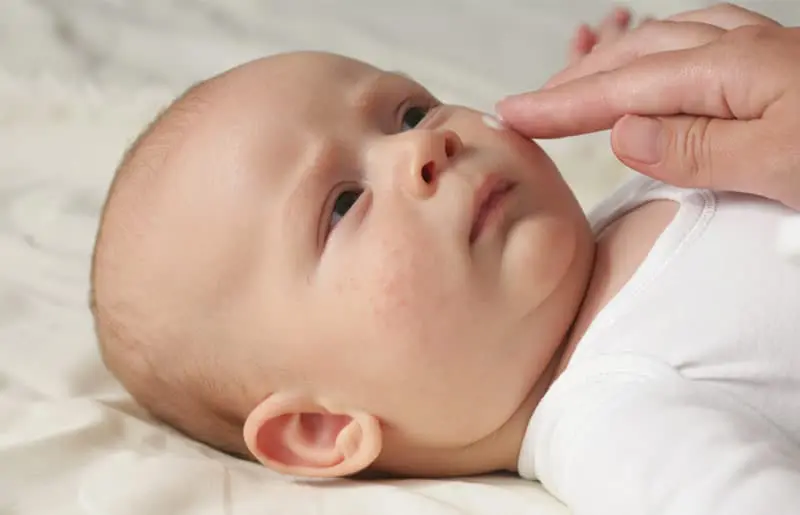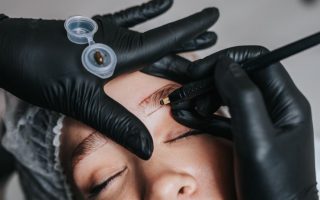Becoming a parent is an experience filled with joy, excitement, and naturally, a fair share of worries. Among the concerns you might encounter are the various skin conditions that can affect your infant. From nappy rash to baby acne, many skin conditions are generally benign but can be distressing for parents to observe. Understanding these conditions can provide reassurance and guide appropriate care. In consultation with a skin doctor or paediatric dermatologist, you can learn how best to manage these conditions and when to seek medical advice.
Table of Contents
Why is Infant Skin Different?
Infant skin is delicate and more permeable than adult skin, making it susceptible to irritation and infection. The skin’s barrier function is still developing, so it is crucial to understand the difference between ‘normal’ newborn skin changes and symptoms requiring medical attention. Some common skin characteristics in infants include:
- Increased Sensitivity: Baby skin reacts more easily to external irritants.
- Thinner Epidermis: This top layer of skin is more delicate, making it less protective.
- High Water Content: Babies have a higher percentage of water in their skin, making hydration crucial but also leading to faster drying.
Common Skin Conditions and Treatments
Nappy Rash
Symptoms: Red, sore skin around the nappy area.
Causes: Prolonged exposure to wet or soiled nappies.
Treatment: Frequent nappy changes, allowing the area to air dry, and using barrier creams can be effective.
When to See a Skin Doctor: If the rash persists for more than a couple of days or worsens, it’s advisable to consult a skin doctor for potential antifungal or antibacterial treatment.
Cradle Cap
Symptoms: Yellowish, greasy scaly patches on the scalp.
Causes: Overactive sebaceous glands.
Treatment: Using baby shampoo and gently brushing off the scales can help.
When to See a Skin Doctor: If the condition spreads or causes discomfort, medical treatment may be needed.
Baby Acne
Symptoms: Red or white bumps on the face.
Causes: Hormones passed from the mother to baby.
Treatment: Usually clears up on its own. Do not use adult acne medication.
When to See a Skin Doctor: Consult a doctor if the condition persists beyond a few months or seems severe.
Eczema
Symptoms: Red, itchy patches on the skin.
Causes: Dry skin, irritants, or allergies.
Treatment: Emollients and topical steroids can be prescribed.
When to See a Skin Doctor: Persistent or worsening symptoms require professional advice, especially to rule out infections or allergies.
Milia
Symptoms: Tiny, white, keratin-filled cysts, usually on the face.
Causes: Immature sweat glands.
Treatment: Generally resolve on their own.
When to See a Skin Doctor: If the condition persists for more than two months, medical advice should be sought.
Impetigo
Symptoms: Red sores or blisters that can rupture, ooze, and form a yellow-brown crust.
Causes: Bacterial infection, usually from Staphylococcus aureus or Streptococcus pyogenes.
Treatment: Antibacterial creams or oral antibiotics.
When to See a Skin Doctor: Immediate medical attention is needed to prevent the spread of this highly contagious condition.
Prevention and Care Tips
- Gentle Cleansing: Always use a mild, fragrance-free cleanser.
- Keep it Simple: Avoid using multiple products that can irritate your baby’s skin.
- Maintain Humidity: Using a humidifier can help keep the skin moisturised.
- Proper Bathing Routine: Limit bath time to 5-10 minutes and use lukewarm water.
- Hydration: Keep your baby’s skin moisturised with a suitable emollient.
When to Consult a Skin Doctor
While many skin conditions in infants are harmless and resolve on their own, consult a skin doctor or paediatric dermatologist if:
- Symptoms persist or worsen despite home care.
- Your child experiences discomfort or pain.
- The skin condition spreads rapidly.
- You suspect a bacterial or fungal infection.
Conclusion
Infant skin is a marvel and a mystery, presenting an ever-changing tableau of spots, bumps, and rashes. Most of these conditions are transient and harmless but understanding them is crucial for parental peace of mind and effective management. Always consult a skin doctor or paediatric dermatologist for a diagnosis if you’re concerned, as some conditions might require medical treatment or could be symptomatic of underlying issues.
By remaining vigilant and armed with knowledge, you can ensure your child’s skin remains as soft, healthy, and beautiful as the day they were born. Remember, the skin is a mirror reflecting internal health, and proper skincare in infancy lays the foundation for a lifetime of skin well-being.




